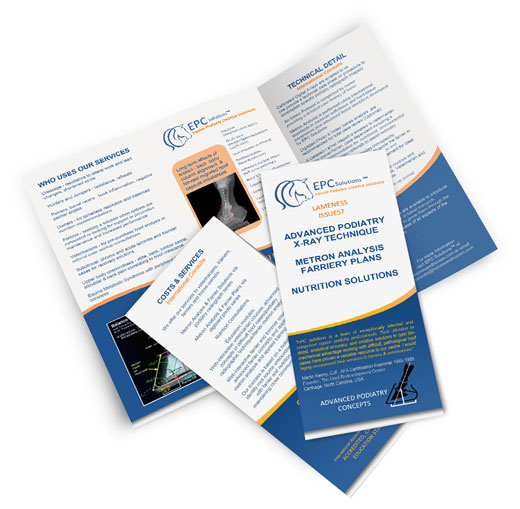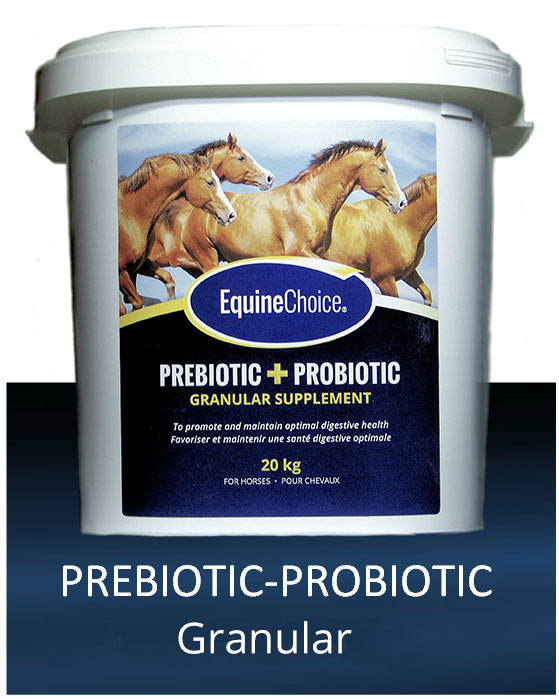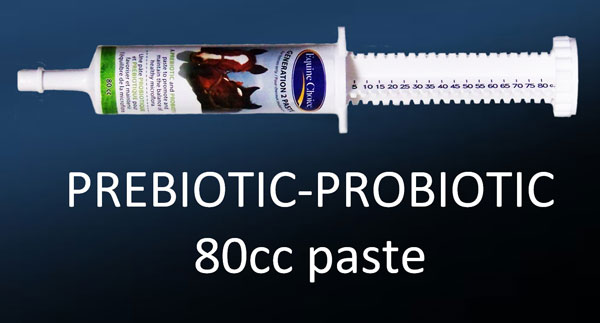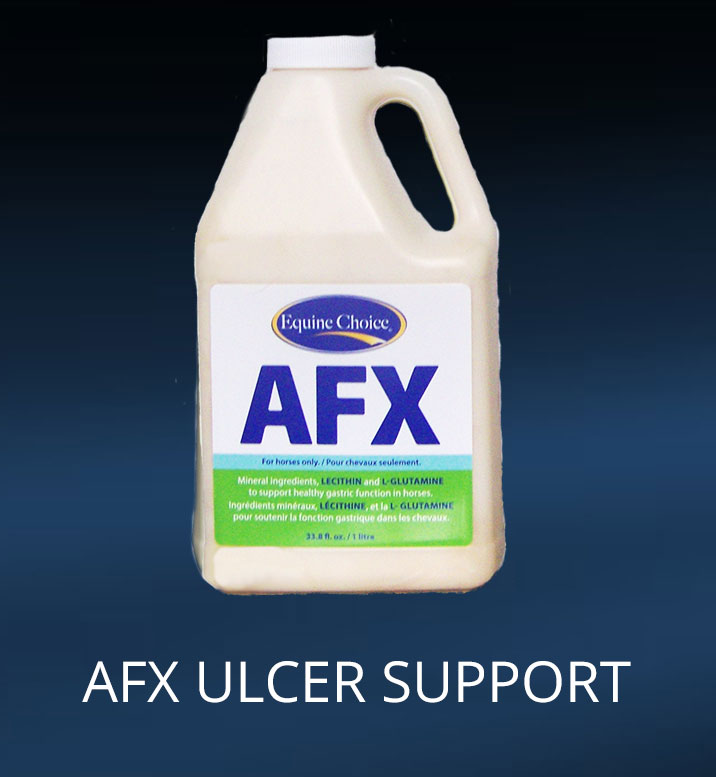HOOVES WITH THRUSH

It certainly is wise to seriously address any presenting signs of hooves with thrush. It's an extremely important topic in our view, so we are going to take this opportunity to talk about it in general.
Hooves with Thrush are quite prevalent in a lot of areas where horses are in long term wet conditions; often prolonged moisture breaks down the tissue's protective barrier to allow organisms in. Some hoof packages don't allow the foot to "air out" and build up excess moisture softening and degrading the frogs.
Not all smelly hooves are thrush infected There is a difference between "smelly" exfoliating moist frog and sole material, and smelly "thrush" odour. The two sometimes get confused. Also, thrush does not always present with black, oozing serum.
We also see a lot
of hooves with thrush in horses with lowered immune health- often easily supported by
fine-tweaking the nutrition program.
Most often we come across it, from an 'accumulative' effect largely seen in hooves subjected to excessive moisture, less than ideal immune system to deal, and predominantly with dorso-palmar hoof imbalance presenting with longer toes, undermined or forward heels. These feet experience some level of toe first landing and caudal pain (avoidance to fully weight and use the poorly supported caudal structures) with slow degradation of frog and digital cushion. Hoof conformation types (boxy upright hooves for example) with recessed frogs may become more predisposed dependent on hoof support (lack of) and environment.
Thrush infected frogs are only the tip of the iceberg Thrush can invade the internal soft tissue structures; the internal sensitive frog tissue and digital cushion. One veterinarian in Vermont has done a lot of work discovering how the internal tissues can be invaded. We met her years back in Vermont at a hoof clinic and she was working with a group of area trimmers to see just how invasive thrush really was. With less-than-ideal perfusion (inadequate blood flow) in damaged fibro-cartilage tissue, it is difficult to repair these internal soft structures yet they are crucial for maintaining health and comfort when loading the back part of the foot. Horses with painful and weak caudal portions of the foot, develop a toe first landing- detrimental to the phalangeal bones and joints from repeated toe-first landing (excessive concussion). The long toe leverage also delays heel-off which increases deep digital flexor tendon pressure on the navicular bone (more caudal inflammation and pain) with increased pulling stressors on the dorsal laminae.
Hoof health can go south from caudal heel pain and hooves with thrush are often a signal that other underlying issues are at play here. Thrush-causing organisms are found in most all soils, dirty bedding (organic material), etc. It simply has better opportunity to invade poor quality frog tissue so both excessive moisture and poor hoof balance can predispose the frog tissue to degradation and thrush infection over time.
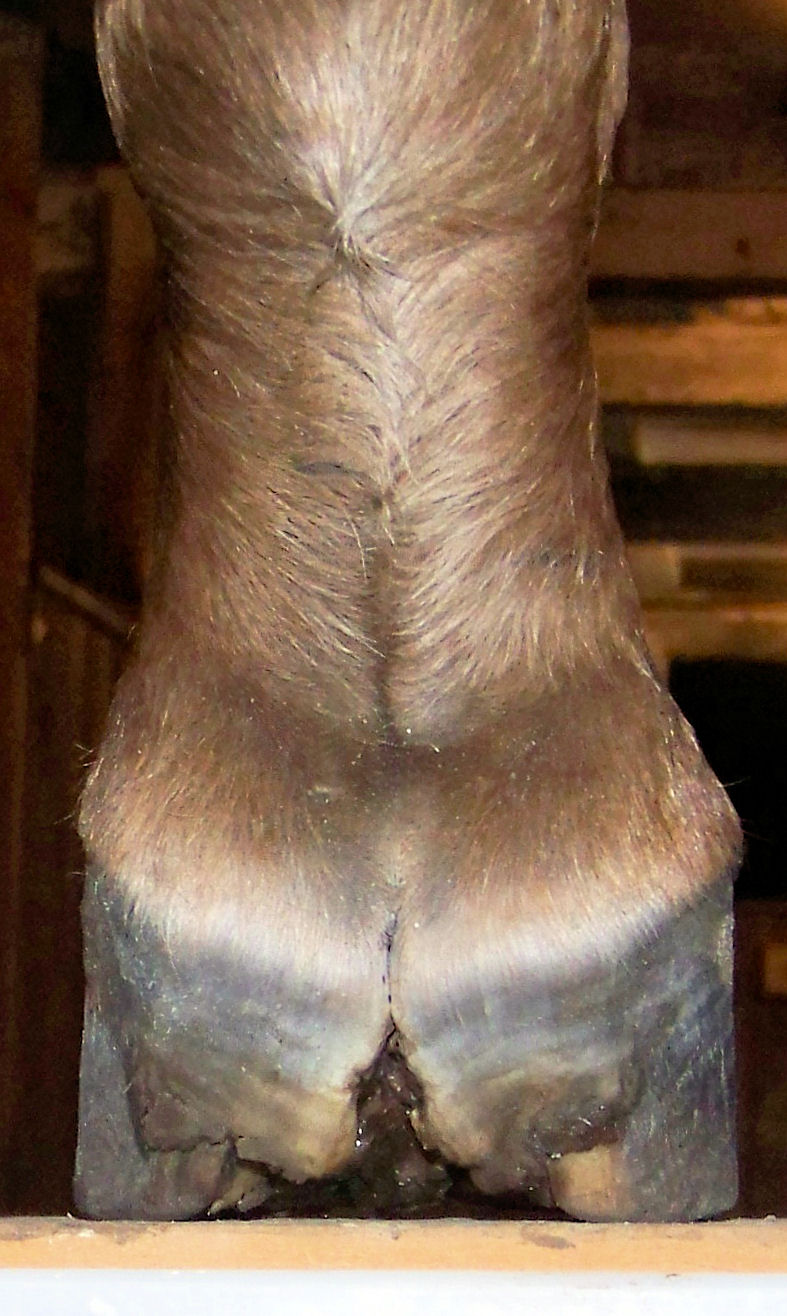
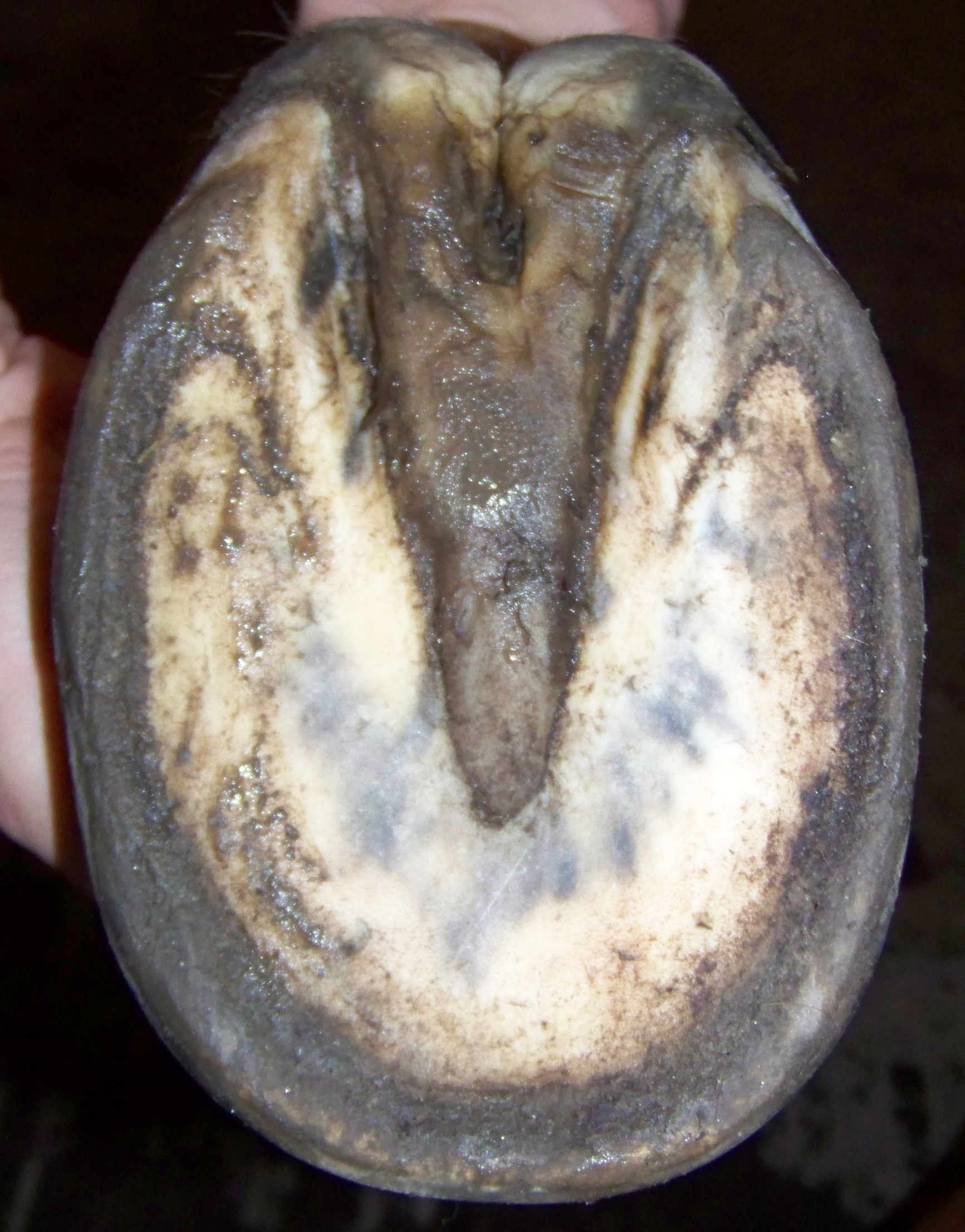
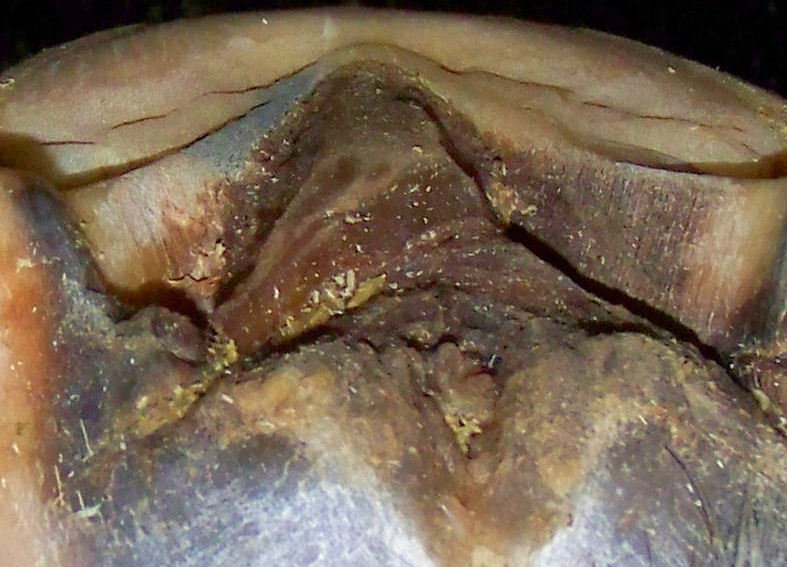
Hooves with thrush infection in the center sulcus, collateral grooves and between heel bulbs
Trimming protocol for thrush infected frogs When dealing with thrush, it is very important to trim away all tags, nooks and crannies in the frog tissue, trim out the center sulcus and trim away the frog overgrowth along the collateral sulci (commissure grooves) where you normally would clean out with a hoof pick. Here you can often discover deep thrush pockets eating away into the sides of the frog along either groove.
It is important to support the hoof with a balanced trim focussed towards phalangeal alignment which will set in motion healthy biomechanics to encourage caudal landing and distributed caudal loading, key to healthy hoof maintenance including frog health.
Treatment protocol for Hooves with Thrush
There are many products on the market to target thrush. Some are more effective than others and success also depends on a) correct diagnosis of thrush infection, b) product of choice and c) due diligence in consistent care and on-going maintenance/preventive measures.
Doc's Thrush Recipe***
For hooves with thrush, we use a mixture of "stronger iodine 7%" and clove oil, mixed 50/50 and using an artist's paint brush, brush in into where all the nooks and crannies were, especially in the center sulcus and collateral grooves where thrush is prevalent. If you have a deep crack between the bulbs, we use a dental needle-nose syringe to get into the really deep areas. You can also saturate a few squares of gauze medicated with the solution and pack into the deep center sulcus or deep crevice between the heel bulbs, ensuring you don't touch soft tissue (bulbs, hairline) and replace daily with freshly medicated gauze until the thrush subsides.
When applying the solution to the frog and in the sulci, make sure it doesn't drip onto adjacent soft tissue. We usually hold a small facecloth or towel against the bulbs so iodine does not contact the bulbs or pastern soft tissue as it stings.
Dr. Ric Redden shared this recipe*** with us many years ago, and to date, it has been the gold standard for us in use for hooves with thrush. Frogs toughen up very quickly and the medicinal properties of both clove oil and iodine get rid of the thrush. BE SURE TO WEAR SAFETY GOGGLES- to protect your eyes from it splashing back at you, especially when using a syringe. If you private message me, I can send you the formulation and instructions.
Never use straight iodine without the clove oil.
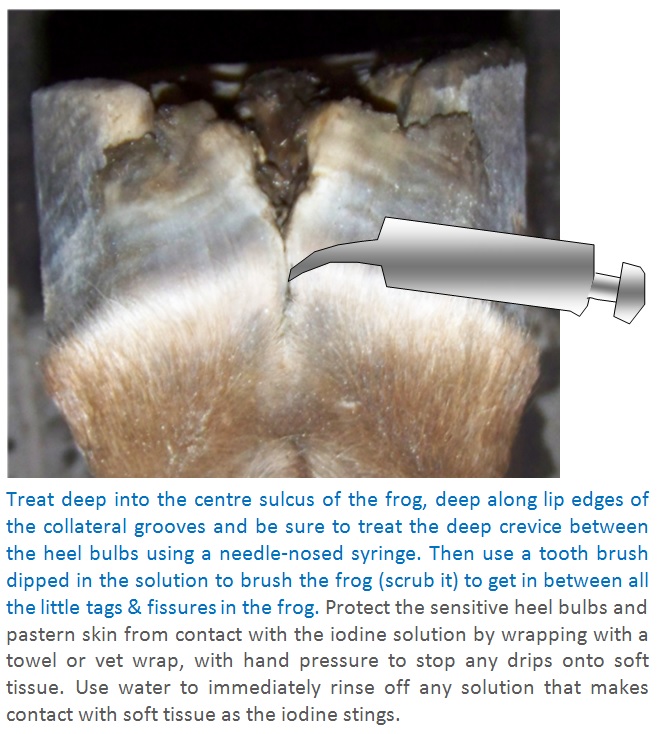
CleanTrax hoof cleaner for hooves with thrush
If you are dealing with severe, long term thrush, or you want to nip the infection in hooves with thrush expediently, we recommend Cleantrax***. It's a bit of an expensive soak, but outright kills the thrush immediately. Then proactively we continue with the iodine-clove oil during wet seasons to prevent recurrence.
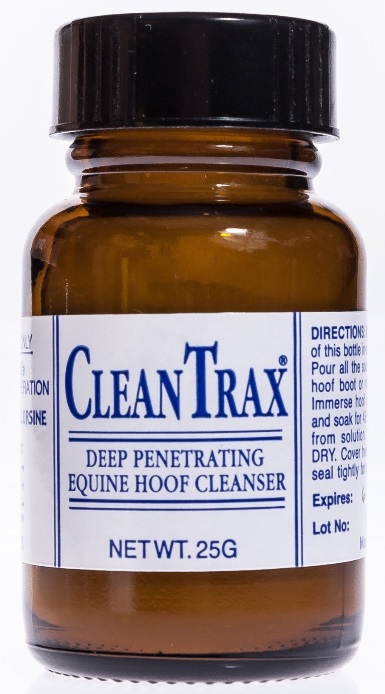
CleanTrax Hoof Cleaner will clean bacteria, fungi and spores from hooves, ie: hooves with thrush.
CleanTrax is a hoof cleanser that contains a proprietary hypochlorous compound which is non-necrotizing and has no adverse effects on normal, healthy cells. The key to CleanTrax's effectiveness lies in a unique stabilizing process, making it extremely surface active and allowing it to penetrate quickly and deeply to the root of the infection. CleanTrax's cleansing action purges bacteria, fungi, and spores from the deepest hoof layers and crevices and also removes dead, powdery, soft remnants of tissue destroyed by fungal activity. Often effective with just one application. As the cleanser penetrates, a vapor is released, instantly eliminating the bacteria, fungi and spores. Safe to use on open wounds and will not affect the quality, color or appearance of the skin or hair. Supplied as a 25 g bottle.
HOW DOES IT WORK on Hooves with Thrush?
It contains the active ingredient oxyclorsine. The chemical structure is unique. First, a chlorine-based compound has been structured in a way that it will not freely dissociate. Most chlorine-based substances (bleach, pool chlorine, chlorine dioxide [White Lightning]) come apart upon exposure to air, releasing free chlorine, with the following consequences: a) they only kill surface growth and do not kill fungal spores; and they cause water to dissociate to capture the hydrogen, forming dilute hydrochloric acid, which is necrotizing and burns tissue on contact. Second, the stabilized chlorine-based compound is linked to a monomeric oxygen, which gives the whole compound a charge and makes it extremely surface active, allowing it to rapidly penetrate small crevices. Monomeric oxygen will also penetrate a spore coat and kill spores.
When oxyclorsine contacts organic material, such as a hoof, the chlorine-based compound and the monomeric oxygen begin to separate, a process which takes about 100 minutes to be complete, thus, two 45 minute soaks (or 45 minute soak followed by 45 minute continued vapor fuming) with effective penetration of the hoofs. Both the chlorine-based compound and the monomeric oxygen are volatile and begin to vaporize once they are in the hoof layers, attacking fungus and fungal spores with two active substances in both the liquid and vapor states.
Dosage and Administration: Clean and trim the hooves with thrush; remove and wash away excess dirt and debris. Mix the entire contents of a bottle of CleanTrax Hoof Cleanser into one gallon of room temperature tap water. Pour "all" the CleanTrax Hoof Cleanser solution into one soaker boot or reinforced plastic bag. Immerse one hoof completely into the CleanTrax Hoof Solution (if a bag is used, pull the top of the bag up above knee and tie or tape it closed.) The bag must be a sealed unit (no vapors escaping).
CleanTrax Hoof Solution is good for a total of 90 minutes, so you can use the same boot with solution to soak two hooves, one after the other.
Soak the first hoof for 45 minutes. After soaking, remove the bag with solution from the first hoof and move to another.
After soaking, DO NOT RINSE OR DRY THE HOOF.
Cover the first finished soaked hoof with a dry empty bag, sealing the top of the bag to allow vapors within the hoof layers to penetrate for 45 minutes longer while the 2nd hoof is soaking. Repeat the dry bag vaporization process once 2nd hoof is finished soaking after 45 minutes.
If infection is bad or recurring, extend the soak time to 60 minutes. ( You will need one bottle CleanTrax per foot).
If the infection is bad or recurring, repeat the treatment in 2 to 4 weeks. To protect the horse's feet and keep them free of infections, every 3 to 4 months use one bottle of CleanTrax Hoof Cleanser to soak each hoof for 20 minutes.
When you are finished soaking, the solution can be poured or sprayed on the stall floor, trailer mats and trimming area to eliminate fungal spores.
Caution: The powder and solution are for external use only. The solution will damage colored fabrics. For topical use only.
Environmenal & Nutritional management
On a last note, having somewhere to put the horse up- a dry area for 8-10 hours daily, during wet seasons allows for pro-active conditions to dry up the soft frogs. Treating for hooves with thrush, then turning the horse out into wet, muddy or manure packed ground conditions is counterproductive.
Addressing the diet to promote a balanced source of nutrients and supporting hind gut microbial health optimizes the body's ability to build a strong immune system which also plays a contributing factor in hoof health and resistance to infection such as hooves with thrush.
An important consideration regarding hooves with thrush is to investigate further; the thrush itself is not usually an isolated incident. Rather, it typically is a signalmen that more is going on here with the foot.
It has been our experience that when you encounter hooves with thrush, the feet are warning you about other issues at bay- with secondary thrush presentation as one of the symptoms.


